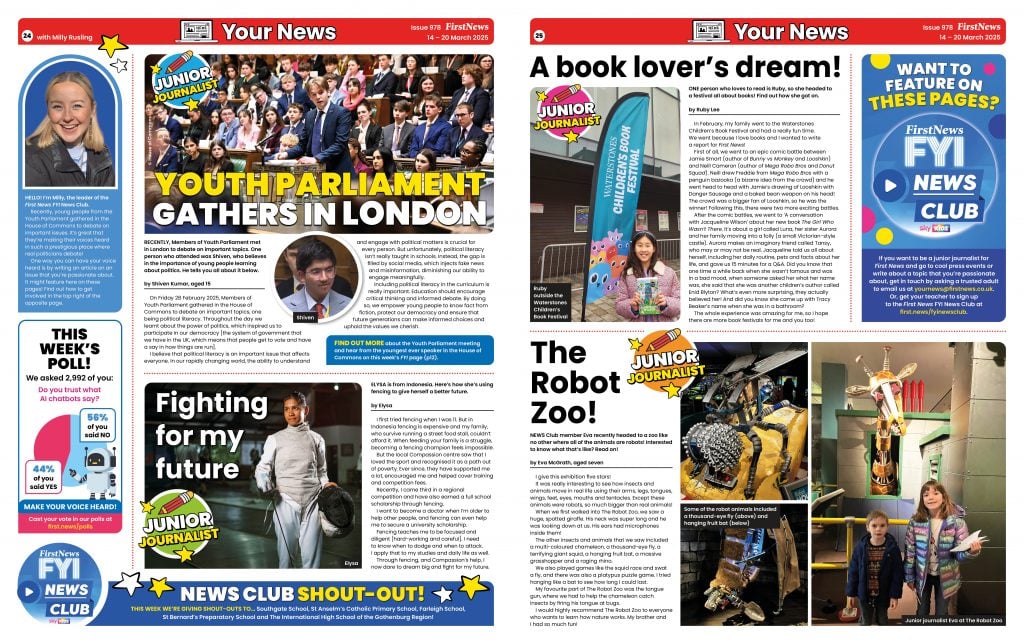Our Top Tips for Junior Journalists
Published: 11th June 2025
Updated: 12th June 2025
Published: 11th June 2025
Updated: 12th June 2025
Do you know a child who would fancy featuring in First News? Take a look at our handy guide to help budding junior journalists get started.

Think about who your audience is and who will be reading your stories.
These are the summaries of the story. Headlines are usually short, simple and to the point.
However, for lighter, less serious stories, they can also be fun and designed to entertain the reader. Sometimes, they might feature easy-to-understand puns and jokes, rhymes or alliteration (when words start with the same letter or sound).
They might also capture the reader’s attention by asking a question, or by creating intrigue, which tempts the audience to read on.
Imagine a pyramid! It’s filled with levels, and each level is filled with treasure. You start exploring it from the top, and each level you go down, the more treasure you uncover.
Now, imagine that the pyramid represents a newspaper story. Each level represents one paragraph, and the treasure inside is… information! You start reading the story from the top, and the deeper you go, the more treasure (information!) you discover.
BUT! Not everybody wants to explore the entire pyramid. The trick is, the reader can go as deep as they like, until they’ve had their fill of information. If, after one level, two levels, three levels, they’ve had enough, they can stop, and wherever they stop, the story makes sense.
TOP TIP! Your reader should know exactly what the story is about from the very first paragraph.

Think about how your story looks on the page and how your audience will engage with it.
First News uses:
Box-outs: putting some information in separate boxes to make it stand out and catch your eye immediately.
‘Fun Fact’ and ‘Did You Know?’ boxes.
Multiple images, as well as maps and illustrations to bring a story to life.
Before submitting or publishing a story, you must always read it back a couple of times and check the facts. Some things to look out for include:
Spelling
Punctuation
Reading different, trustworthy sources to make sure your information is correct. Always try and go back to the original source if you can!
We’re always on the lookout for reports, stories and pictures from our readers to feature on our Your News pages. If you want to write about something you’re passionate about, get in touch at [email protected].
If you want to learn more about what it’s like to be a journalist, watch our Meet The Team videos. Get to know the people behind the newspaper you read every week here.
First News reaches millions of young readers every week, at home and at school. Our age-appropriate news stories and activities spark curiosity, build media and information literacy skills and empower children with the tools to navigate the world.